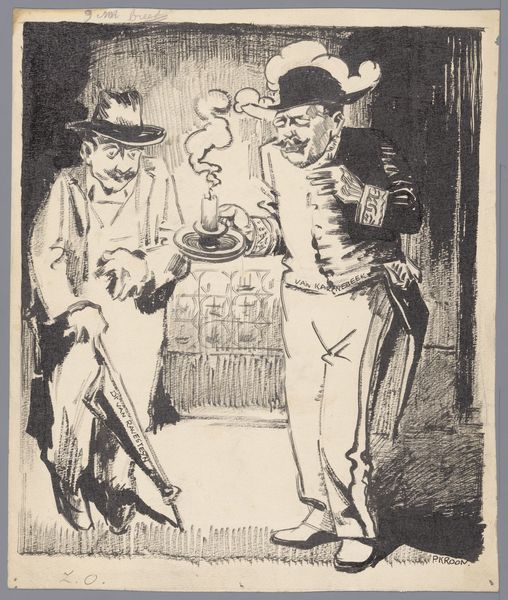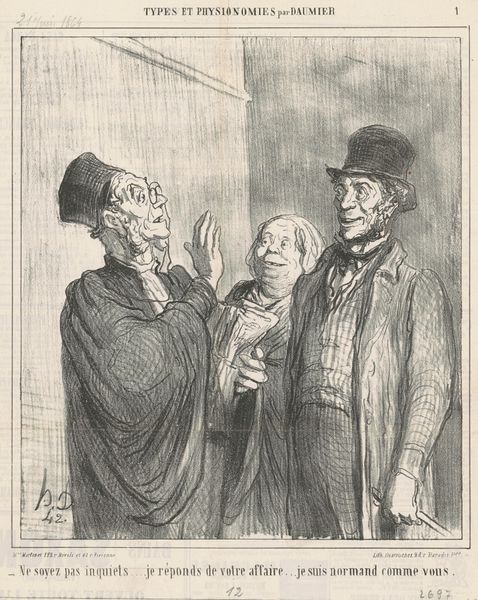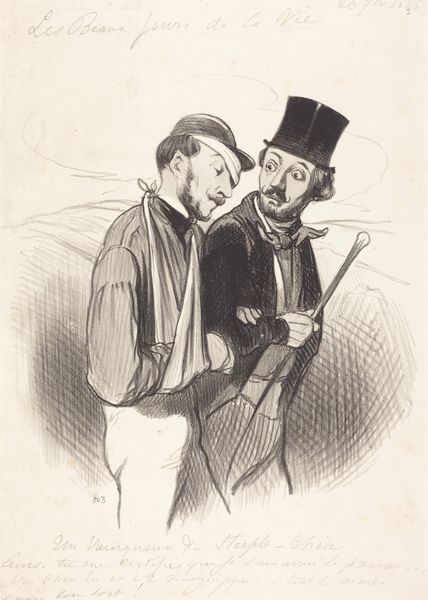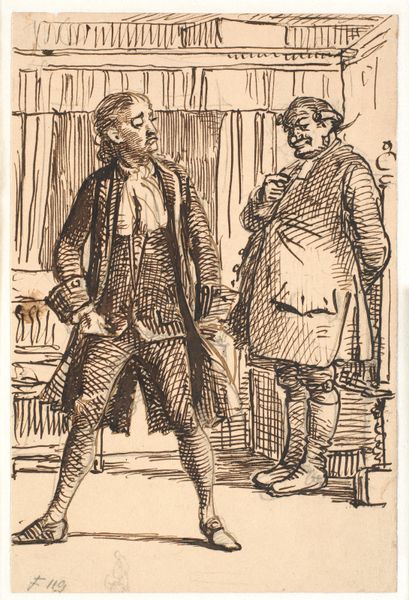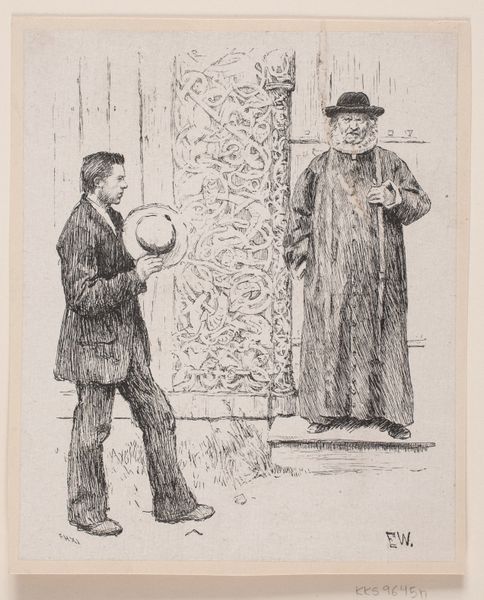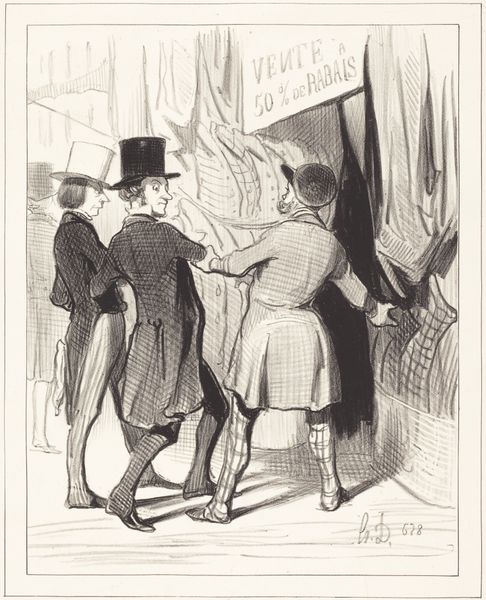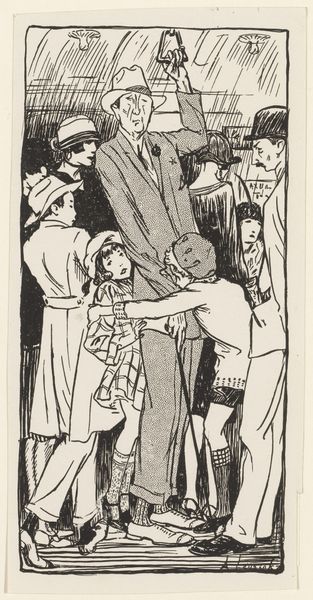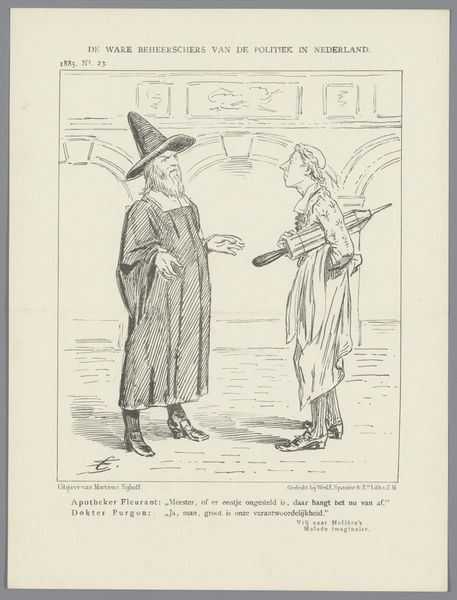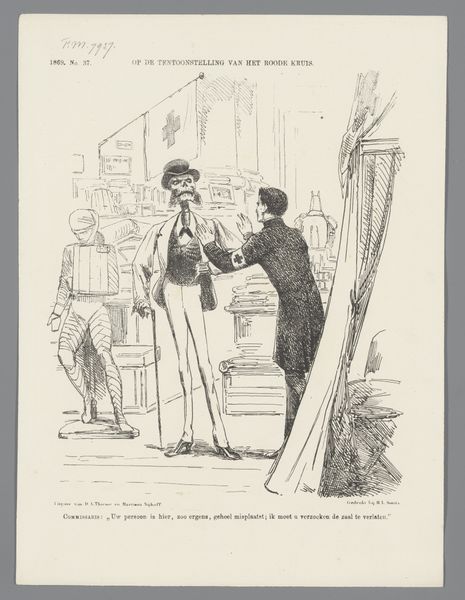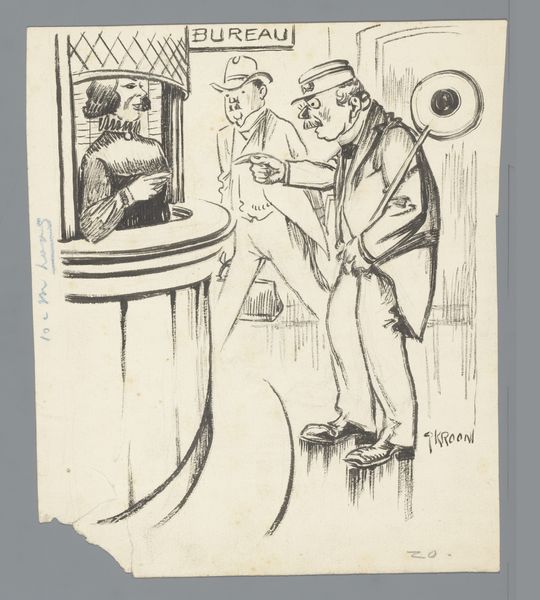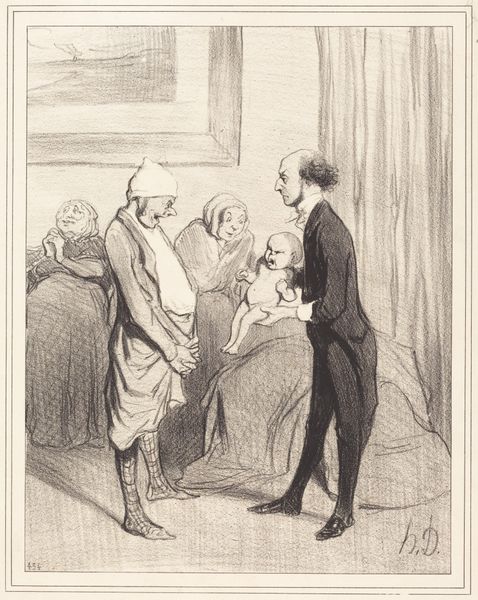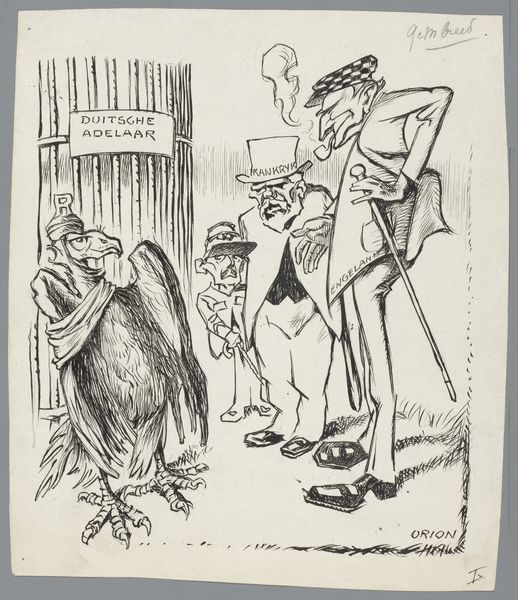
drawing, ink, pen
#
drawing
#
art-nouveau
#
narrative-art
#
figuration
#
ink
#
pen-ink sketch
#
pen
#
watercolour illustration
Dimensions: height 208 mm, width 172 mm
Copyright: Rijks Museum: Open Domain
Curator: This artwork, simply titled "Musch en Bouwmeester," is attributed to Patricq Kroon and thought to be created sometime between 1900 and 1924. It's rendered with pen and ink, and the artist added watercolor, too. Editor: The limited color palette—essentially black, white, and a light blue wash—gives it a strange, unsettling atmosphere. It feels almost like a fever dream, these two figures starkly defined against a bizarre background. Curator: Patricq Kroon's artistic endeavors place him within the realm of narrative art, yet it's hard to grasp what that narrative may be. Editor: It's figuration, sure, but highly stylized! Look at the exaggerated lines on the left figure’s face, almost like deep carvings. The architect's stiff formality is such a contrast. Curator: The inscriptions beneath the figures—"Musch" and "Bouwmeester"—are evocative. One is labeled “Orion”. They immediately suggest a confrontation between artistic vision, represented by the mythological figure, and societal construct in “Bouwmeester”, meaning building master, perhaps implying control and structure? Editor: Semiotically, their contrasting attire is striking. Musch looks almost biblical with his shawl and wild hair, versus Bouwmeester, proper in a suit, complete with cane. The backdrop is another symbolic landscape that’s both claustrophobic and nonsensical: palm trees with…buckets? Curator: Given the period—the turn of the century—the work might reflect the anxiety surrounding modern urban development and the role of artists within a rapidly changing society. Art Nouveau celebrated decorative beauty and stood in contrast to the rise of industrial functionality. Perhaps that’s hinted at in the contrasting forms and figures. Editor: You’ve given me much to consider with these allusions. Even though unsettling in its construction, this drawing makes the observer wonder. It’s quite evocative. Curator: It pushes us to rethink conventional representation and encourages social inquiry and introspection. Editor: Definitely an ambiguous image and one that would generate discussion in an exhibition about early twentieth century artistic representations.
Comments
No comments
Be the first to comment and join the conversation on the ultimate creative platform.
